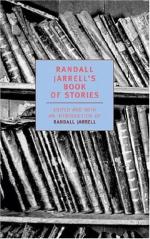|
This section contains 4,978 words (approx. 17 pages at 300 words per page) |

|
SOURCE: Vardamis, Alex A. “Randall Jarrell's Poetry of Aerial Warfare.” War, Literature, and the Arts 2, no. 1 (spring 1990): 63-82.
In the following essay, Vardamis studies Jarrell's poetic representations of war and the fate of the solitary airman.
A generation of American poets, such as Robert Lowell, Karl Shapiro, Richard Eberhard, John Ciardi, Richard Wilbur and W. D. Snodgrass, was engulfed by the tragic enormities of World War II. Their sensitive and often insightful poems convey the personal and political upheavals caused by that war. None of these poets, however, can match the unerring skill and powers of observation of Randall Jarrell (1914-1965)1 in communicating the sensations, thoughts and emotions—the entire experience—of the airman from basic training through aerial combat and the eventual return to peacetime. If the U.S. Air Force were to select its poet laureate, Jarrell should be a leading contender.
Jarrell, who enlisted in...
|
This section contains 4,978 words (approx. 17 pages at 300 words per page) |

|


